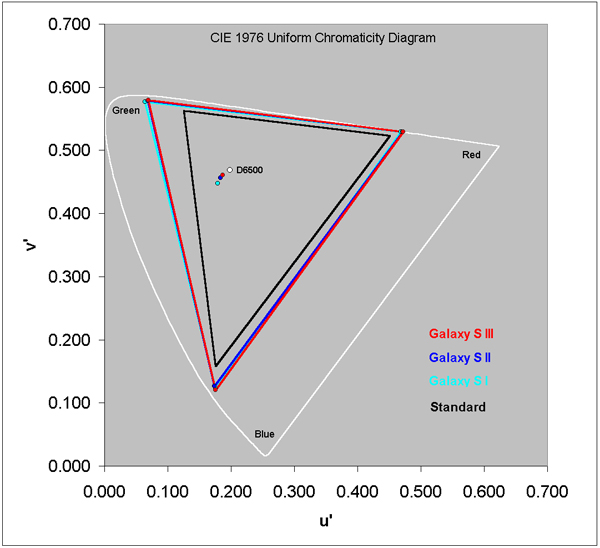Figure 2 shows the measured Color Gamuts for the Galaxy S I, II and III along with the Standard Color Gamut in black. The outermost white curve is the limits of human color vision - the horseshoe is the pure spectral colors and the diagonal is the Line of Purples. A given display can only reproduce the colors that lie inside of the triangle formed by its primary colors. Highly saturated colors seldom occur in nature so the colors that are outside of the Standard Gamut are seldom needed and are unlikely to be noticed or missed in the overwhelming majority of real images. Note that consumer content does not include colors outside of the Standard Gamut, so a display with a wider Color Gamut cannot show colors that aren't in the original and will only produce inaccurate exaggerated on-screen colors. The dots in the center are the measured color of White for each of the displays along with the D6500 Standard White, which is marked as a white circle.
To deliver accurate image colors for consumer photo and video content the display must match the Standard Color Gamut and the Standard Color of White. Note that too large a Color Gamut is actually visually worse than too small a Color Gamut because that produces gaudy colors that are over-saturated.
The Color Gamuts of the Galaxy S I,II,III are all virtually identical and are 138 percent of the Standard, which produces oversaturated colors that can appear comic book like and gaudy in some instances. Photos appear with way too much color.
Not only are the Galaxy S I,II,III Color Gamuts set way too large, but they are also very irregular - Green is much more saturated compared with either Red or Blue, as shown in Figure 2 below. This imbalance has a tendency to give images a Green accent and color cast.
